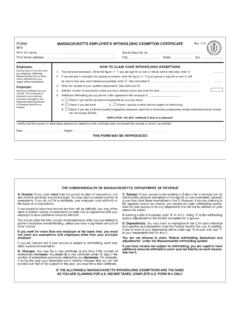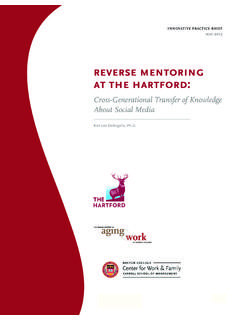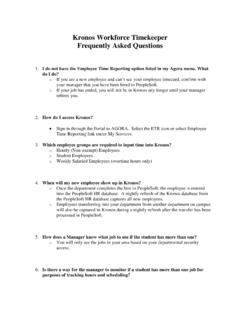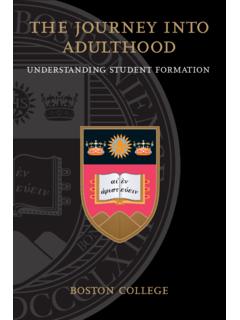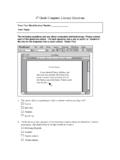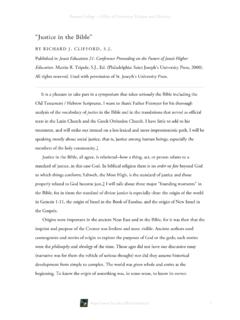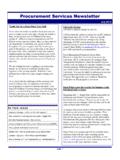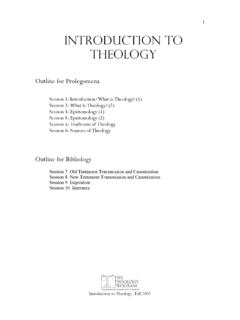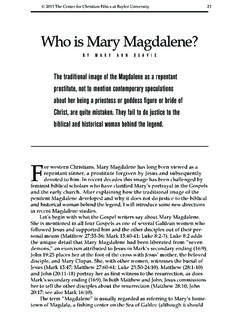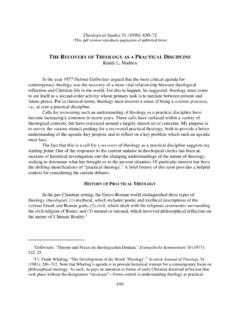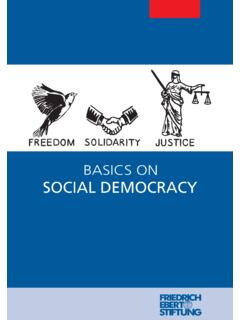Transcription of THE BOISI CENTER PAPERS ON RELIGION IN THE UNITED …
1 THE BOISI CENTER PAPERS ON RELIGION IN THE UNITED STATES An Introduction to Christian Theology Thoughtful, constructive interreligious dialogue depends not only upon the openness of the dialogue partners to diverse perspectives, but also upon a reliable foundation of correct information about the various beliefs being discussed. For those who desire a basic understanding of the tenets of Christian faith, this paper offers a brief history of Christianity and summarizes the central Christian beliefs in God, Jesus Christ, the Trinity, the Bible and authority, sin and reconciliation, sacraments, spiritual practices, and ethical living.
2 INTRODUCTION This paper provides a primer on the basics of Christian theology as it is understood in the American context. It explains the major beliefs or doctrines that are generally accepted by all Christians while also highlighting the theological diversity of the Christian churches. In other words, although all Christians adhere to the doctrines discussed here, various groups of Christians often interpret these doctrines differently. These disagreements usually have historical roots; thus, Christianity s historical development is inseparable from its doctrinal development.
3 For this reason, the paper gives an overview of Christianity s historical development before moving into a discussion of the major Christian beliefs. As would be the case with any religious tradition, the complexity of Christian theology and history cannot be explained fully in a brief paper. Many nuances of Christian theology and history tend to remain in the background of how Christianity is perceived and practiced in the UNITED States; frequently, these details may not even be familiar to American Christians themselves.
4 Nevertheless, some knowledge of these particulars is essential to ground an accurate understanding of Christianity. This paper thus provides an important complement to the other PAPERS in the BOISI CENTER series. In particular, since religious beliefs and religious practices always inform one another, reading this paper together with the paper on Religious Practice in the UNITED States is recommended. The paper begins with a brief historical outline of the beginnings and major divisions of Christianity.
5 It then summarizes the Christian beliefs in God, Jesus Christ, the Trinity, the Bible and authority, sin and reconciliation, sacraments, spiritual practices, and ethical living. 2 A BRIEF HISTORY OF CHRISTIANITY The history of Christianity unfolds organically through time. It is commonly understood to begin with Jesus, who was born two thousand years ago. However, because Jesus was Jewish, some date Christianity s roots much further back, to the beginnings of Judaism. To illustrate the vast sweep of historical development, this section proceeds in four parts.
6 First, it addresses the roots of Christianity in the first through the third centuries ( Common Era, dating from the time of Jesus birth); second, it describes Christianity s development through the Middle Ages; third, it explores the Protestant Reformations in the 1600s and their continuing influence today; fourth, focusing on the UNITED States, it summarizes several aspects of American Protestantism. The Beginnings of Christianity (1-300 ) Christianity began as a movement within Judaism during the first century At this time, the Jewish rabbi now known as Jesus of Nazareth undertook a public teaching ministry in which he preached about the imminent coming of the Kingdom of God.
7 As reported in the Christian Scriptures (commonly known among Christians as the New Testament), Jesus assembled a core group of twelve Jewish disciples, along with many other followers. Together they ministered to the poor and outcast in present-day Israel and Palestine. Around the year 33 , Jesus was arrested and executed by the Roman governor. However, Jesus followers claimed that he rose from the dead; they came to believe that he was the Son of God and that his death and resurrection saved them from their sins.
8 As their conviction grew, they named Jesus the Christ meaning Messiah or Anointed One according to the prophecies of the Jewish Bible, the Hebrew Scriptures (commonly known among Christians as the Old Testament). This is the origin of the name Jesus Christ and led to Jesus followers being called Christians. After Jesus death, Christians became identified as a particular sect within Judaism. These Jews believed that Jesus was the Messiah foretold in their Hebrew Scriptures, whose coming they had long anticipated. However, as time went on, the majority of Jews did not believe that Jesus was the Messiah, and their differences with Christian Jews increased.
9 Further, many non-Jewish people did come to believe in Jesus. In this way, Christianity gradually became a religious movement distinct from Judaism, as it is practiced today. Over several generations, Christians compiled their collective memories of Jesus teachings and sayings in various docume nts. Best known among these today are the four narratives of Jesus life, death, and resurrection that now appear in the Christian Scriptures, the Gospels of Matthew, Mark, Luke, and John. During these early years, many letters were also circulated among Christian communities about their belief in Jesus as the Messiah and the way Christians should live and worship.
10 The letters of the apostle Paul and a few other authors were eventually included in the Christian Scriptures along with the four Gospels. Christians debated for centuries over which 3documents to include in their scriptures; the first known list of the twenty-seven documents now accepted as the Christian Scriptures did not appear until the year 367 CE, and it may have taken even longer before Christians universally accepted this list. Further Development (300-1500 ) Since their religious practices were distinguished from Judaism only gradually, Christians of the first and second centuries worshipped in small pockets throughout the Middle and Near East, and their religious practices differed from town to town.
